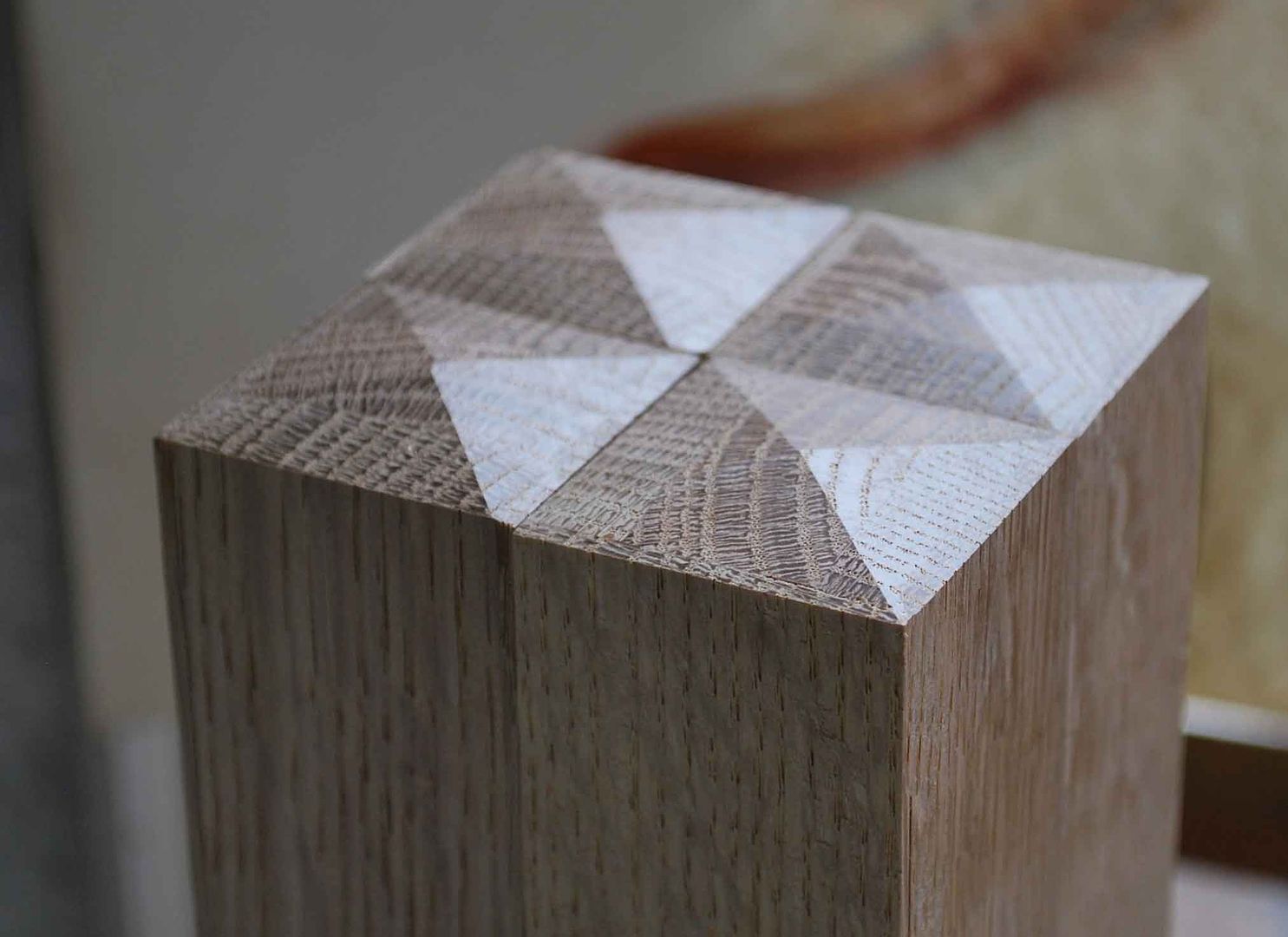Here is my latest example of a little knowledge is a dangerous woodworking technique.
I'm planing to make a Morris chair. After reading up on how to make the chair, I decided to make the foot stool first. Seemed like a productive way to practice the techniques - smaller pieces = smaller errors.
To economically make the 2" square legs of the stool with ray fleck on all four sides, I laminated three pieces together: two figured quarter sawn strips with a ordinary oak strip in the middle. I then glued thin, figured veneer pieces on the two sides of the leg that showed the glue lines and didn't have any figure. So far, so good. Figure on all four sides.
OOPS. The legs of the stool have a 5th side that is visible. One end of each leg will be seen. Unlike the chair where the top of the legs are mortised into the arms, the top of the stool legs are just sitting out there with the end grain laminations clearly visible. DUH!
My first thought is to add another little veneer lamination to the top of the leg. In effect continuing the up one side, over the top, and down the other side with the figured veneer.
My second thought is to post here for some advice. Will wood movement a cause a problem for a "Veneer Topper" stay in place?
Is there a better solution?
Thanks.




 Reply With Quote
Reply With Quote






